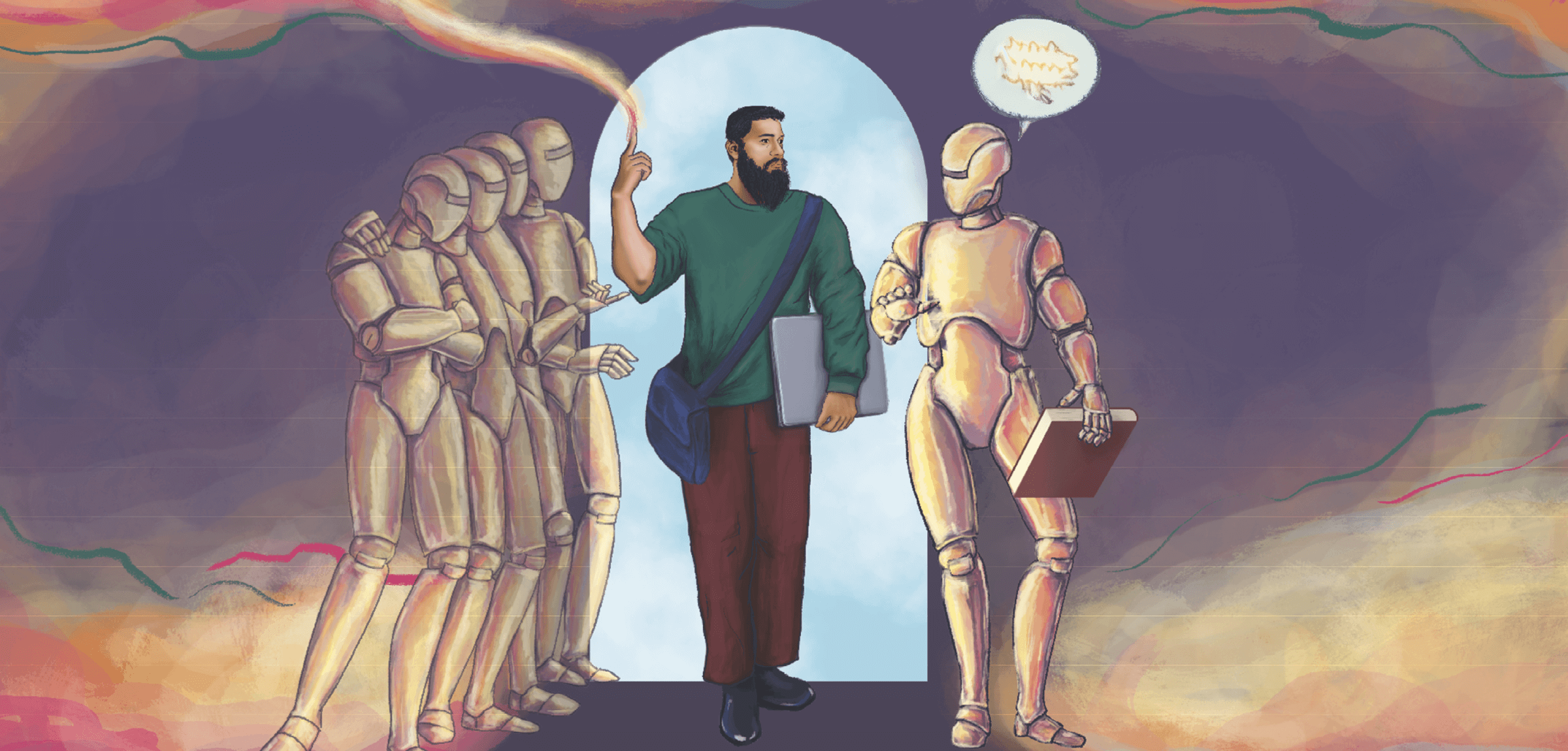Cogenerating content through collaboration with AI
“Create a lesson plan on adding fractions.”
“Please create a short unit exam on the parts of a plant.”
“Help me write a letter to parents about our upcoming field trip to the zoo.”
These are all common prompts that teachers across the country use when they open up AI platforms like ChatGPT, Microsoft Copilot or Google Gemini. While these prompts yield rapid results, the overall success of such queries can be mixed.
At its core, AI aims to return a result, even if it is not fully aware of the end user’s needs. If it misunderstands or does not know the answer, it will simply make something up to appear successful. As a result, many queries return minimally helpful results. We can change this. We need to change this. When engaging with artificial intelligence, we need to start viewing this technology as a cointelligence or collaborator rather than a mind-reading assistant. Such a shift moves us from being consumers of data produced by artificial intelligence to cocreators of output results. We do this by encouraging the AI system to ask us questions before and while it is creating an output for us. Encourage the AI to seek clarification from you prior to producing anything for you.
Example No. 1
Here’s a typical prompt that would result in a relatively mundane response:
Create a lesson plan about the parts of a plant.
A better, “cogenerative” prompt would be
I am a grade 7 teacher in Alberta and would like an engaging opening lesson to teach about the parts of a plant. I would like your assistance with this. First, please ask me five questions, one at a time. Allow me to respond to each question prior to asking the next question. After I have answered all five questions, please give me three ideas for how to open this unit with my students.
While this new prompt may take longer to craft, the results will be immeasurably better. The AI may ask questions about how long you have, who your students are, what supplies you have access to or your teaching style. All of this information will be used to create a much more targeted output. The better your responses to the AI’s questions, the better your overall results will be.
The most important part of the dialogue prompt is “ask me one question at a time and allow me to respond prior to asking the next question.” Without this, you will often get a list of questions and a response that does not include your input.
Example No. 2
Another example of a cogenerative prompt could be:
I am a Grade 4 teacher in Edmonton, Alberta. I have a wonderful class of students that we call the Gonzo’s Greats. My students call me Mr. G. I write a weekly email home to families to inform them about things that happened this week, what we have been covering in class and important reminders for the upcoming week. I would like you to act as an engaging Grade 4 teacher and assist me with my writing of this weekly email. I would like you to ask me four questions, one at a time, allowing me to answer before the next question is posed. Upon my answering the fourth question, please craft a concise but witty and engaging email home that I can send to parents
The old adage, “garbage in, garbage out,” also applies to our work with AI. The more information we can provide in our prompts, the better the overall result will be. By encouraging AI systems to ask us questions and engaging in meaningful dialogues with AI, users can unlock new possibilities and drive new innovations in their teaching.
Workshop available
Association PD staff conducted extensive research into teachers' AI use and developed the workshop, AI Tools to Amplify Your Professionalism and Save Time
Find out more
A staff officer in the Professional Development (PD) program area of the Alberta Teachers’ Association, Chris Gonsalvez is a subject matter expert in the productive use of AI by teachers.



